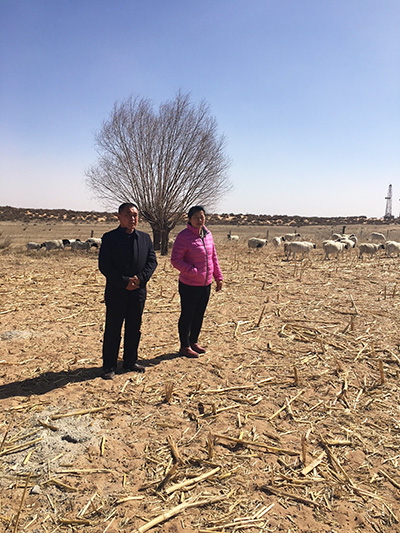 |
|
Bixiriletu and his wife, Renqinhaorile, stand on their farmland, with their sheep in the background in Angsu village.[Photo by Satarupa Bhattacharjya/Lin Hong/China Daily] |
Sitting in her house underneath a portrait of Genghis Khan, the founder of the Mongol Empire and the most revered figure in the ethnic Mongolian community in China, Suyalaqiqige says, as she sees it, the biggest change in her village has been the mechanization of agriculture.
A delegate to the Ordos People's Congress since 2013, her role includes helping local herders get better access to public services and promoting government policy. But despite her village's strides in modernization, she recognizes some challenges that remain.
"There are asphalt roads connecting villages (in the larger area) but not all herders' families. If this is solved, it would be more convenient for them to travel and sell their products outside," Suyalaqiqige, 51, says, speaking through a Mongolian translator.
Many villagers hire trucks to transport goods to markets and at times buyers come to the village.
Other than infrastructure and transport requirements, protecting the grasslands is a priority.
Local herders have started to divide plots for their sheep to graze, and the emphasis is on quality breeds, so that the numbers can be reduced, she says.
Most herders interviewed in the Otog Front Banner said they come from families that once led nomadic lives.
Now, even as the newer generations welcome changes in their work and lifestyles, they will likely continue to pursue their cultural traditions.
Lin Hong contributed to this story.